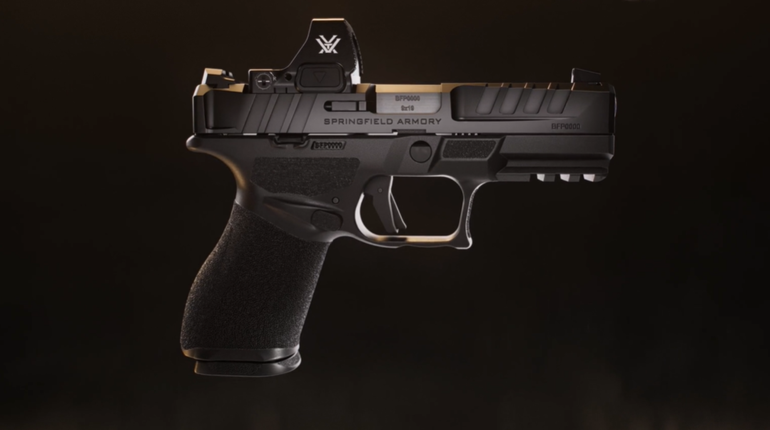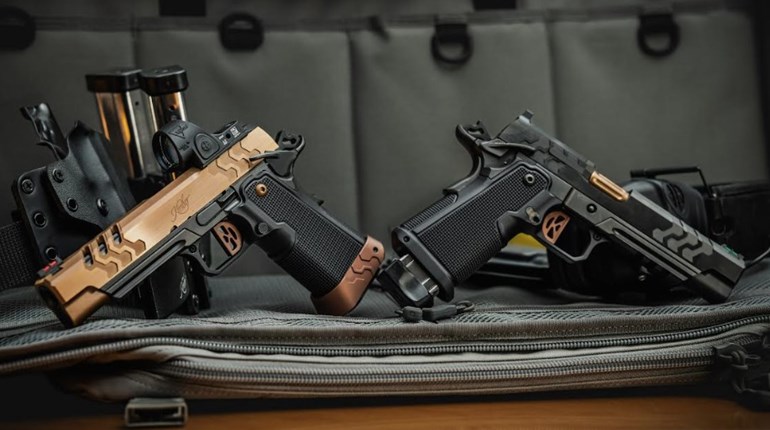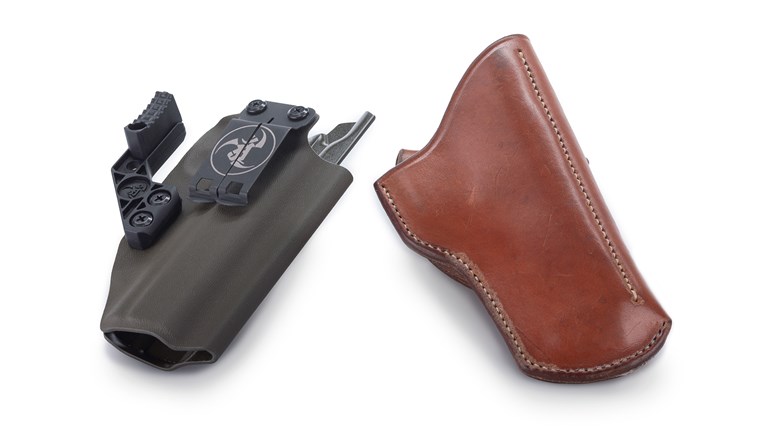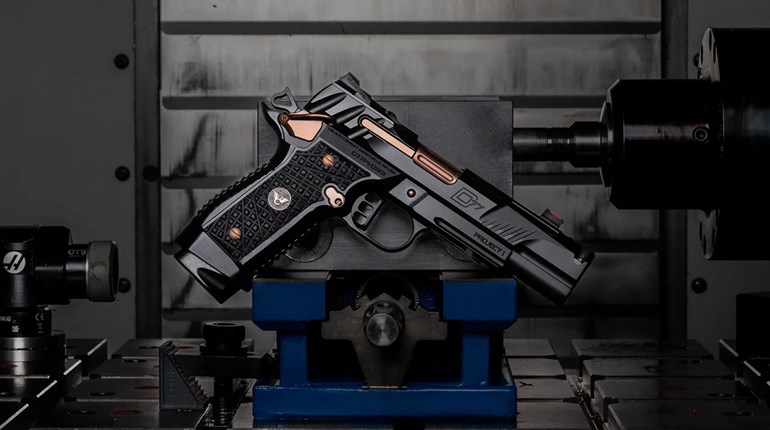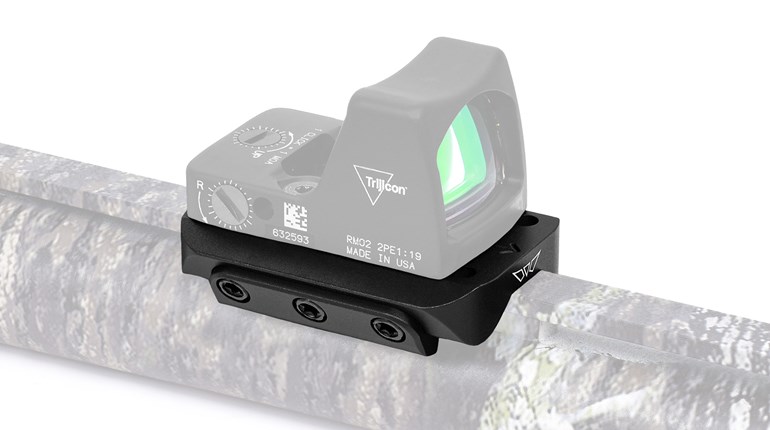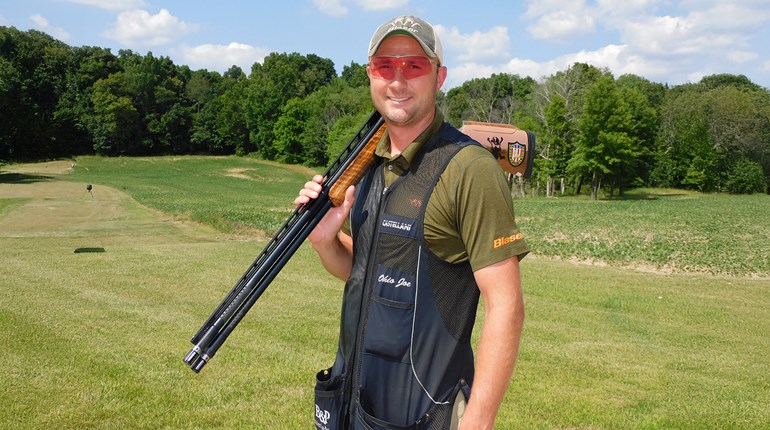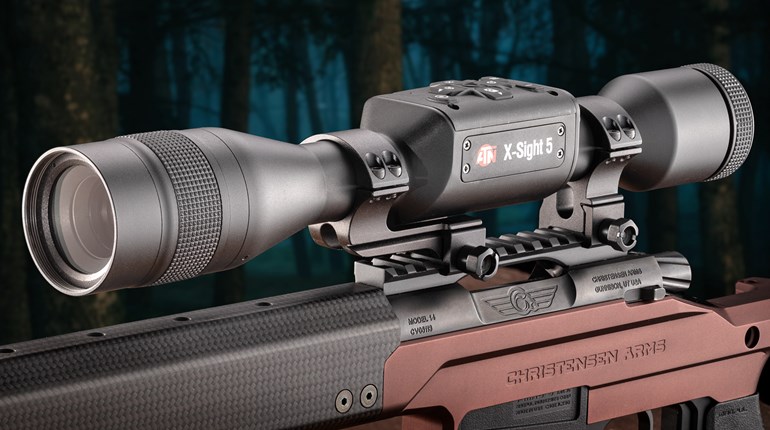
So I’ve been tasked with reviewing the new Walther Creed pistol. I know: Poor me, I have to shoot guns for a living. But there’s a problem. How do I present it in an exciting, attention-grabbing way? Do I go with a “Rocky”-franchise reference? One of our Facebook followers attached a picture of Carl Weathers as soon as we posted the Walther Creed. Of course, Shooting Illustrated is known for its tortured musical references, so asking if the firearm public will accept the Creed “with arms wide open” is almost too cheesy to resist. We’re talkin’ Lambeau Field headwear cheesy.
The thing is, most magazines pimp top-of-the-line products. Look at a car magazine. Do you see American subcompacts, minivans and SUVs on the covers, or six-figure Italian and German sports cars? The aspirational usually trumps the realistic. We, ourselves, try to mix it up to appeal to practical, budgetary considerations as well as the more fanciful dreams of our readership, but high-end firearms are just easier to write about. More’s the pity, because the Walther Creed is a good gun. More importantly, it’s going to be a very significant one.
While it might lack a detail or two, this pistol is going to stun the market like the jab of its fictional namesake pugilist. What the Walther Creed brings into the ring is value. It’s a German-engineered, 16-shot pistol that performs reliably and well, yet has an MSRP of only $399.
Yeah, you read that right.
At that price point, the Creed has the potential to change the market just by being wholly satisfactory, if unspectacular. It could easily become the “everyman” pistol or the gateway gun, either to armed carry in general or to Walther’s product line specifically.
A Pistol in Every Holster
To seize the mantle of “everyman” pistol, the Creed would not only have to be affordable by the masses; it would have to be absolutely reliable, easy to use and maintain and fit a variety of hands. OK, I think the $399 MSRP, which likely translates to street prices of around $350, will put the Creed among the least expensive serious fighting pistols out there.
Reliability, as we’ll see, is pretty darned consistent with a variety of good quality self-defense ammunition. Further, the manual-of-arms for the Creed is remarkably simple: Slap in a loaded magazine, release the slide, align the sights and press the trigger. It’s as much a point-and-shoot system as any gun out there. The gun has three passive safeties, including two drop safeties (obviating the little safety blade that seems to bisect the trigger of most polymer pistols) and a firing-pin block. Moreover, the gun can be taken apart and reassembled by virtually anyone who can read and has opposable thumbs. Such does not even require a pull of the trigger, though I’m of the mind that if that’s an important consideration, you really need to work on your safe gun handling. Ease of maintenance isn’t just the result of simple takedown, though. The materials—mostly Tenifer-treated steel and polymer—are exceedingly durable, either resistant or impervious to rust or corrosion.

The Walther Creed’s size is a pleasant surprise in that it’s large relative to a lot of unnecessarily small pistols that have entered the market in the past few years. I divide carry guns into two categories: pocket pistols and belt pistols. A pocket pistol (for me) has to have an empty weight of about 15 ounces. If it is heavier than that, it has to go on my belt (or in a shoulder rig). The thing is, once it’s oversize for a pocket, there is little to no advantage in trying to make the gun tiny. If it’s going to be worn on the belt in an outside-the-waistband (OWB) holster or even more so in an inside-the-waistband (IWB) rig, it can be much larger and conceal and carry just as well. The Creed isn’t huge, but it’s sizable, allowing a full grip. However, the 27-ounce pistol is not gratuitously large; it’s sized to conceal well under the jacket, vest, bulky sweatshirt or untucked Oxford shirt that you’ll need for any belt gun.
Designed to fit the overwhelming majority of male hands, the grip allows easy manipulations. With women, it’s hit or miss. Some found the Creed comfortable and unremarkable to operate, while others had trouble, especially with the extended slide release.
The Creed is a fine gun in a vacuum; it offers good, solid, features that are entirely adequate and it seems wanting only when compared to Walther’s premium pistols, namely the PPQ M2 line.

The Walther Creed is not striker-fired. It has a bobbed hammer and a slightly stagey trigger. It’s actually a good trigger, just not a great one like those found on in the M2 line. Also, there are no differently sized backstrap inserts to customize the grip size.
However, similar to the company’s best guns, the Creed has a sculpted, ergonomic grip shape. Also, it has front and rear cocking serrations on the slide. The rear sight is metal and adjustable in its dovetail for windage. The generous-but-protected mag release is touted as being ambidextrous, but Walther means reversible; it can easily be set to one side or the other, not both at the same time. Like the M2s, the Creed has a single, captive recoil spring. Finally, the Creed has a Picatinny rail on the dustcover to make installing a light and/or laser module simple. The Walther Creed even has a feature not found on the M2s: a cut-out on either side of the mag well allowing you to easily and firmly grasp the magazine and rip it out in the event of a malfunction.

Grumblings
All seems well, but I follow the dictum of Capt. Nitpick—“Leave no nit unpicked.” So here are the areas about which I must quibble. The trigger, while in action shooting, is very good. However, when concentrating on a static firing line, you feel a long take-up, then an area of sudden stacking, then the break. At speed, you cannot feel each of these stages, but in slow motion you can. So what? It’s not made for bullseye shooting, it’s made for self-defense. Fair enough. Let’s call that one an observation rather than a complaint.

Polymer Walthers have a high bore axis. That tends to render pistols less controllable than they otherwise could be. And that high bore axis and relatively small grip results in another problem I have heard others complain about—aesthetics. Now, I’m one of those “handsome is as handsome does” guys (when you look like me, you sort of have to be), but it’s important to some buyers. I get the impression the problem is not pure aesthetics, but rather the Walther Creed’s resemblance to some low-end pistols with dubious reputations. Pride of ownership is no small consideration to many people, even when buying something I regard as a mere tool. Me, I can live with it—figuratively and, more importantly, literally. I may be caught with an ugly gun, but at $399 I’ll never be caught without a gun. Anyway, I think the Creed is not without visual appeal. I particularly like the large “Creed” graphics on the slide and grip frame, though I usually find such tacky. Here, the positioning and font make the name look pretty nice.
Not surprisingly, the sights are in the three-dot pattern. All the rage a few years ago and de rigueur for the past couple, they are currently falling out of favor among top trainers. Additionally, the rear unit is not in the ledge style with which you can rack the slide against your belt or a flat edge should you have to perform a one-handed reload. That’s really getting out there, though. Many people packing a double-stack pistol don’t even carry a spare magazine, opting for a second gun or, more often, nothing at all.

The last area that may warrant attention is the grip frame, It’s contoured and textured, but the stippling is too hard and shallow to be very effective. This is a simple fix, though. I’d just get some Talon self-adhesive grips. They’re laser-cut stencils of granulate (think skateboard tape) or rubberized material that fit the specific pistol precisely and are a good (and affordable) solution.
On the range, the Walther Creed functioned perfectly with all of the ammo we tried. Extraction was positive and ejection adequately forceful, while magazines dropped freely when released. Accuracy was satisfactory, though it exhibited the common problem of sending the first, manually chambered round away from the pattern, opening up what would have otherwise been good groups.
Is the Creed a great pistol? No, greatness dwells higher up in Walther’s product line. What it is is a damn good gun that retails for $399 or less, and that may be more impressive. Walther didn’t purchase a low-end design and slap its name on the gun. The Creed is a Walther through and through, just not the most accomplished in the family. Circling back to boxing, dollar-for-dollar rather than pound-for-pound, the Walther Creed may well be the best “fighter” out there.















